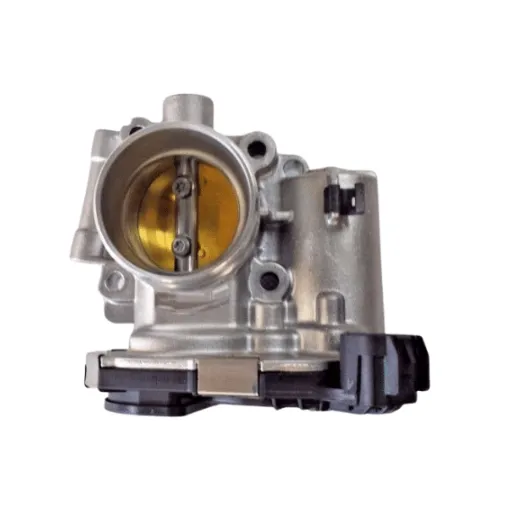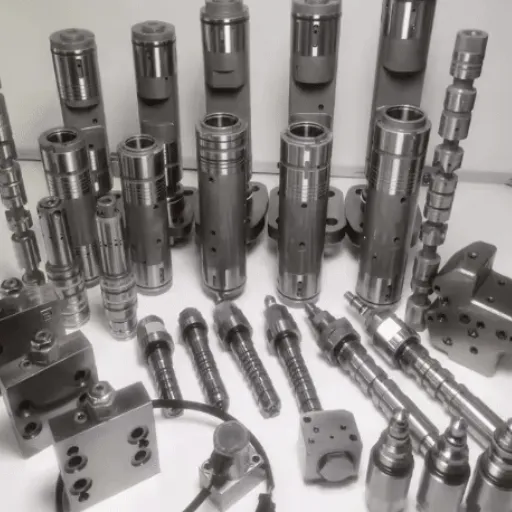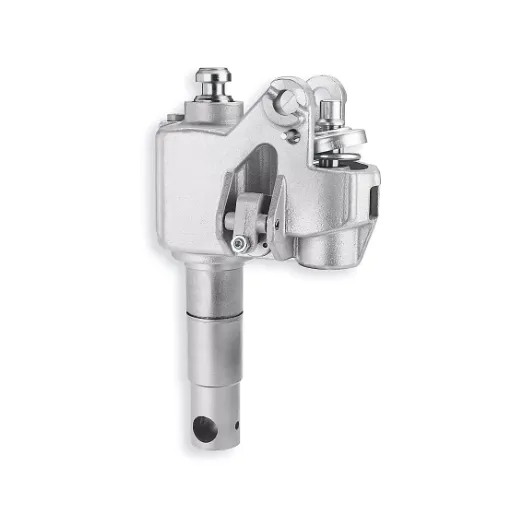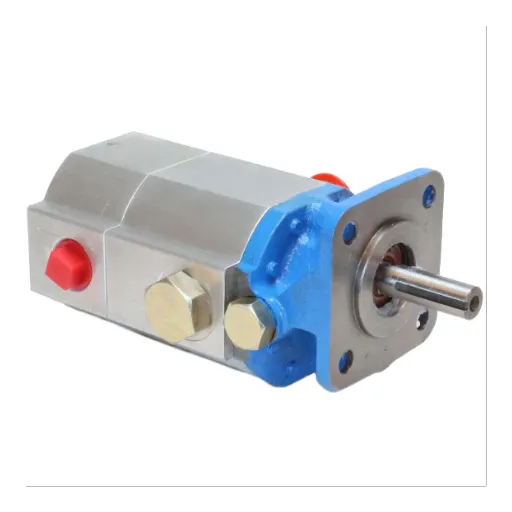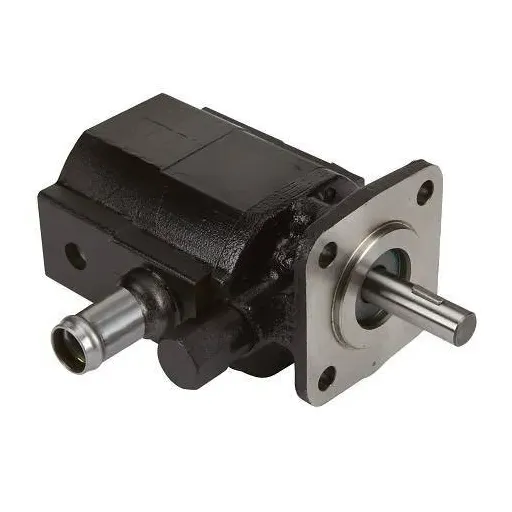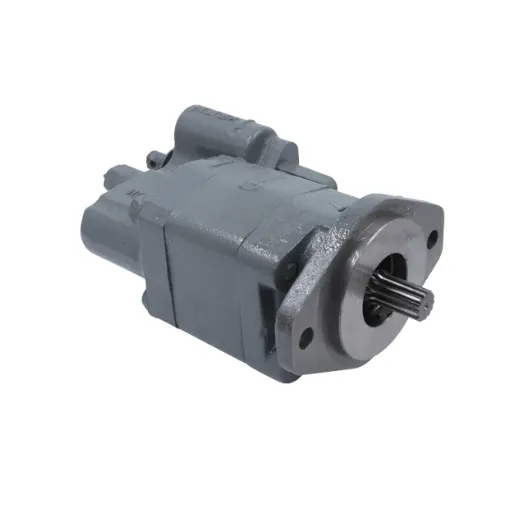The throttle valve forms a very important part of a carburetor because of its role in the regulation of the air and fuel flow to the engine. Be you an auto enthusiast, a mechanic, or just someone curious about how engines work, it would be a good idea to know how a throttle valve functions and looks. Drawing lessons from this article, one will learn about some aspects of an otherwise complicated topic to facilitate one’s understanding. Consequently, it sheds light on aspects of the throttle valve, from its use in the carburetor to how it affects engine performance, and therefore instills an appreciation of this wonderful bit of engineering. So prepare yourself, and let’s get into the mechanics of the throttle valve and what makes it vital for engine functionality.
Introduction to Throttle Valves
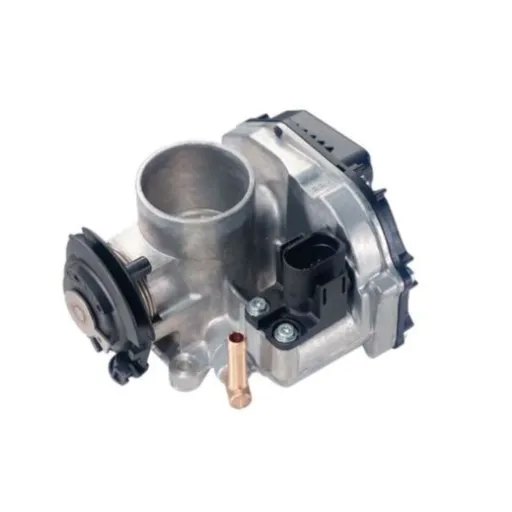
What is a Throttle Valve?
The throttle valve is, in essence, an integral part of the internal combustion engine that controls the air flow (or air-fuel mixture) entering the engine. Situated within the intake manifold, the throttle valve directly affects the amount of air flowing into the engine’s combustion chamber, regulating the speed and output of the engine. It essentially acts as a gateway, allowing airflow to speed up the engine and restricting it to slow down when less power is needed.
The throttle valve is mostly linked to the accelerator pedal in modern vehicles. When a driver presses on the pedal, the throttle valve opens up, more air entering the engine to be mixed with fuel. This enhanced combustion precipitates more power to the wheels with which they are driven. If the driver lifts off the pedal, the extent of valve opening decreases, restricting airflow into the engine, thereby slowing down engine output.
Modern engines are often supposed to be fitted with the electronic throttle control system, where the movement of the throttle valve is controlled electronically and not mechanically. It provides smooth operation, better fuel economy, and better emission system controls. Considered in simple terms, the throttle valve ensures that the engine performs and is efficient in selecting the correct air-fuel ratio under all driving situations.
Importance of Throttle Valves in Carburetors
Carburetor throttle valves are crucial in defining the characteristics that correspond to the air-fuel mixture entering an engine. By controlling the passage of air through the carburetor, the throttle valve makes sure the engine receives the correct ratio of air to fuel for efficient combustion. Since this consequently serves as a powerful determinant of engine output, fuel efficiency, and performance, failures in the throttle valve can result in engine stalling, poor acceleration, or increased emissions.
Furthermore, the throttle valves keep an engine responsive to the ebb and flow of driving situations-the throttle valve is increased and decreased in airflow as the accelerator is pressed or released, keeping transitions smooth in the change of engine speeds. This assuredness of control is paramount in securing a dependable and steady engine performance, whether cruising on a highway or working through city traffic.
The presence of an efficient throttle valve is always crucial in maintaining emission standards. Since it regulates the air-fuel mixture, the valve tends to discourage the wastage of excess fuel and leads to diminishment in harmful emissions. Such modern advancements include an electronic control system, wherein the precision and effectiveness of the throttle valve have been improved in carbureted engines for better environmental and performance reliability.
Overview of Carburetor Functionality
The carburetor is an important device inside an internal combustion engine because it mixes air and fuel in the right proportion for combustion. Essentially, the carburetor ensures that the engine is supplied with a consistent and proper mixture suitable for best performance under various operating conditions. Power, fuel efficiency, and emissions are thus all directly affected by the way the carburetor controls how much air and petrol goes into the engine.
A venturi, which has a narrowed cross-section to create a pressure difference to draw the fuel into the passing air, is an important component of the carburetor. Once atomized by the fuel, the liquid fuel travels with the air toward the cylinder. The air supplied to the engine is regulated by the throttle valve, located just downstream of the venturi and apt to increase or decrease the power output of the engine as dictated by the intention of the driver.
The modern day carburetor may house cutting edge features such as an idle jet to keep it running steadily at low speeds and a choke to enrich the mixture for starting purposes on a cold day. While carburetors have gradually given way to fuel injection in newer models, their simpler construction and less cost ensure they are still being used largely in smaller engines and motorcycles. Balancing air-fuel mixtures well, carburetors have proved useful in myriad applications.
Types and Designs of Throttle Valves
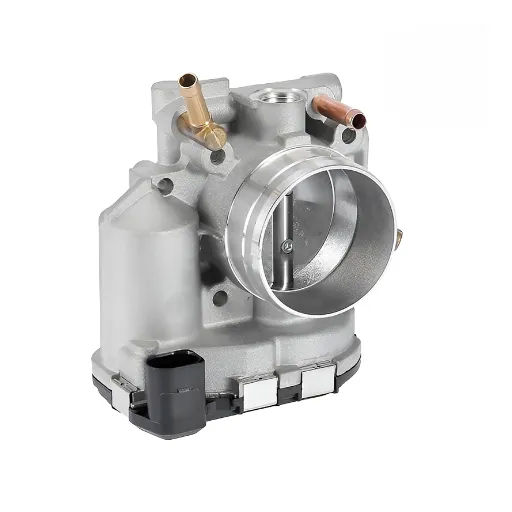
Different Types of Throttle Valves
Throttle valves differ in design, application, and performance requirements. Here are some common types:
Butterfly Valves
Butterfly valves are generally found as throttle valves in internal combustion engines. It consists of a simple circular disc mounted on a rotating shaft. Changing the angle of the disc can precisely restrict or permit airflow into the engine. With their simple design and responsive nature, they are well-suited for automotive applications.
Slide Valves
Slide valves use a sliding motion to regulate airflow. They commonly appear in certain carburetors, appreciated predominantly in motorcycles and small engines for the smooth regulation of air and fuel.
Barrel Throttle Valves
Using a cylindrical barrel with a hole through it, air intake is given control as one turns the barrel, offering very little resistance to flow. This is mainly found in performance applications where efficiency and smooth flow of air are paramount.
Rotary Throttle Valves
The rotary throttle valves are very much like butterfly valves in that the nature of the movement is rotary while motion for performance sake tries to optimize high-speed airflow. They find applications in racing and some high-performance vehicle engines.
Electronic Throttle Control (ETC) Valves
Increasingly, modern vehicles are employing an ETC where the valve position is adjusted electronically, based on inputs from accelerator pedals and other sensors. This allows precise control, improved fuel economy, and integration with advanced engine management systems.
Each kind of throttle valve has its own advantages and is selected based on such factors as cost, simplicity, performance requirements, and application.
Throttle Bodies vs. Carburetor Throttle Valves
Throttle bodies and carburetor throttle valves differ in operation, control, fuel delivery, efficiency, and maintenance-throttle bodies are electronically controlled and precise, whereas carburetors rely on mechanical means and are simpler.
| Aspect | Throttle Body | Carburetor |
|---|---|---|
| Operation | Electronic | Mechanical |
| Control | Automatic | Manual |
| Fuel Delivery | Injection | Mixed |
| Adjustment | Auto-adjust | Manual tuning |
| Efficiency | High | Moderate |
| Maintenance | Low | High |
| Cold Starts | Easy | Difficult |
| Cost | Higher | Lower |
Design Variations in Carburetor Throttle Valves
Carburetor throttle valves come in a variety of designs according to the optimization or performance needs needed to deliver an air-fuel mixture to different engines. Among the common varieties are butterfly valves, slide valves, or barrel throttle.
The Most Common Butterfly Valves: These are the most traditional and were basically invented to be in the throat of the carburetor and rotate. The butterfly valve’s simplicity and durability made it susceptible to easy handling, which then saw application customarily as American and modern engines equipped with carburetors.
Slide Valves: Mostly used in small engines for motorcycles and go-karts, the slide valves achieve throttle inlet passage closure by moving a flat or cylindrical slide up or down. This principle gives a good throttle response and better airflow control at high RPMs.
Barrel Throttles: One of the busiest designs usually found in high-performance applications. The barrel throttle consists of a cylindrical valve that rotates within the carburetor body, guaranteeing excellent airflow efficiency with minimal turbulence and is thereby suitable.
A carburetor throttle valve design depends on performance goals, engine size, and desired operating characteristics. Manufacture and material methods have improved the career of such designs for better durability and precision. Although they have been advancing lately toward full fuel injection systems, carburetors do continue to exist in some areas, especially among motorsport and vintage vehicle applications, where their ease of use and tunability are appreciated by enthusiasts.
Common Issues with Throttle Valves
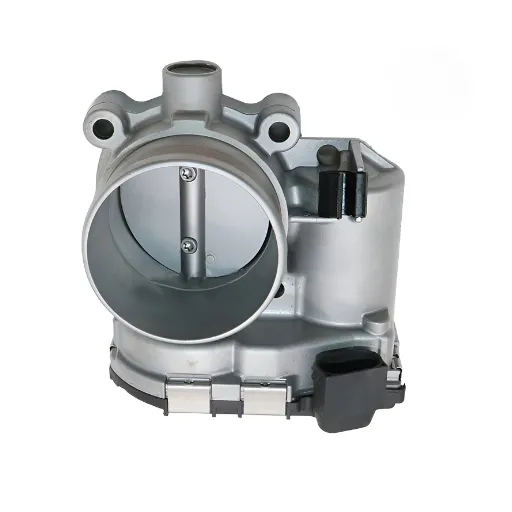
Identifying Common Problems in Carburetors
A carburetor, while being widely appreciated for its simplicity and versatility, is susceptible to a variety of problems which may lower engine performance. Clogging is a common problem: This blockage could be caused by dirt, debris, or stale fuel either restricting air or fuel flow resulting in reduced power output or engine misfiring. Other problems may occur due to air leaks in the system caused by worn gaskets or loose connections that allow an improper fuel-air mixture to enter combustion. A flooded float chamber or float set at the wrong level can also cause fuel to leak or too rich a mixture.
Another common problem is varnish or residue-type buildup caused by fuel evaporation and, in the case of modern ethanol-based gasoline, clogging of jets, choke mechanisms, or idle passages; all of which serve to further impair carburetor function. Slowly at first, corrosion may also wear down the inner parts, causing less accurate fuel delivery measurement.
These problems can be prevented if one would just maintain the unit properly by cleaning components on a regular basis, inspecting seals, and ensuring all adjustments are made. Knowledge of these common issues can serve the interested operators in diagnosing an adjustment or repair problem efficiently and, thus, maintaining the reliability and longevity of their carbureted systems.
Symptoms of a Malfunctioning Throttle Valve
Thrust valves, when malfunctioning, can affect the functioning of an engine, with a set of indications tangibly manifesting in the client. One of the most typical signs is inconsistent engine idling: the engine idles either too high, too low, or fluctuating randomly. The reasons are those improper regluing of airflow to the throttle valve, which then interferes with the air-fuel mixture required for smooth operation. Holding the pedal and watching for acceleration can reveal symptom number two: decreased acceleration. The throttle valve does not properly open with pedal inputs.
Another main symptom of a bad throttle valve is the loss of fuel economy. That is to say, if the throttle valve is not working perfectly, the engine might burn more fuel because of an imbalance in air intake, thereby consuming more gasoline. Another set of issues may include vehicle stalling or deceleration when the throttle valve sticks or does not properly close. These symptoms tend to seriously annoy the drivers who have to rush to the nearest mechanic before it damages the engine further.
A malfunctioning throttle valve may, furthermore, cause warning lights to illuminate on the dash, for example, “Check Engine.” A modern electronic-throttle vehicle can store diagnostic trouble codes or DTCs that would help pinpoint the nature of the problem. The codes may point to throttle position sensor failure or electronic control unit failure, thrice closely linked to the operation of the throttle valve. If and when these matters are resolved via diagnostic testing and mechanical inspection, the engine will perform at its prime, and serious safety risks will be avoided.
Impact of Throttle Valve Issues on Combustion Engines
Throttle valve issues greatly may affect the overall performance, efficiency, and reliability of combustion engines. Some of these are the five most critical effects of throttle valve problems:
⚠️ Reduced Engine Performance
A malfunctioning throttle valve is hindering the air-fuel mixture from constituting its optimal composition for engine operation. This involves a compromised acceleration in the engine and lower power output; for example: if the throttle valve does not open fully, airflow is restricted, which, in turn, reduces the efficiency of the engine by about 15%.
⛽ Increased Fuel Consumption
In cases where throttle valve irregularities occur, the engine may overconsume fuel in order to counterbalance these interruptions to the airflow. Studies reveal top inefficient throttle operation can cause fuel consumption increases as much as 20% in urban driving.
🌍 Emission Complications
When the throttle valve malfunctions, the air-fuel mixture is thrown out of proportion, thus causing incomplete combustion. Incomplete combustion leads to a rise in harmful carbon monoxide (CO) and unburned hydrocarbon (HC) emissions, thereby violating the emission norms.
🛑 Engine Stalling
Restrictive air passage can lead to sudden engine stalling with a sticking or failing throttle valve, particularly during idle and low-speed operation. This places the occupant in peril and depreciates the vehicle’s reliability as one would be stranded unwittingly.
⚙️ Premature Wear of Engine Components
In consistent throttle valve trouble, components like the spark plugs, pistons, and cylinders of an engine get strained erroneously due to incorrect combustion processes. This slowly increases the maintenance costs and reduces the working lifespan of the engine.
Almost immediatly fixing land issues with throttle valves improves motor and fuel efficiency. But it also protects the environment and increases the lifespan of combustion engines. Regular servicing and diagnostics work to put a stop to all these effects.
Troubleshooting Throttle Valve Problems
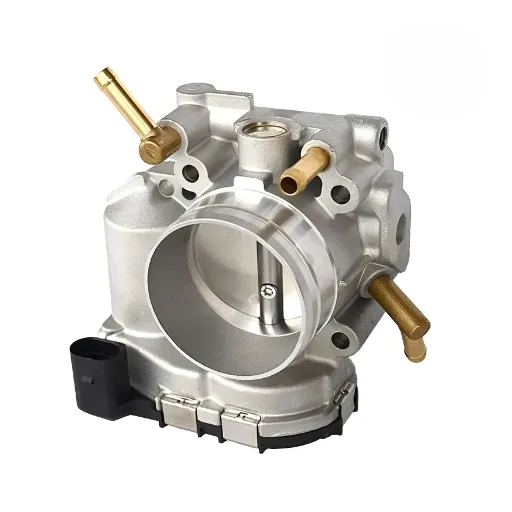
Effective Troubleshooting Techniques
When handling throat valve problems, the first measure should be conducting a visual inspection. Look out for damage, dirt, or debris around the throttle body and valve. Carbon buildup is a very common present issue and may stop the throttle valve from moving smoothly, thus rough idling could be the effect, or the engine does not adequately respond. If this happens, cleaning usually takes care of the issue; clean the throttle body using a throttle cleaner. Also, check for any loose or corroded electrical connections to the throttle position sensor (TPS); poor electrical connections can create erratic readings and improper control of the throttle.
Properly troubleshooting throttle valve problems requires the use of diagnostic tools. An OBD-II scanner can be used to read error codes, which help identify the exact malfunction. For example, codes such as P0121 or P2135 can cause errors with the throttle position sensor or with the throttle actuator control system. By understanding the codes and what they mean, the technician can then treat the root cause of the problem and save time instead of wasting it on trial and error. Also, advanced scanners can provide a live stream of data concerning real-time operations of the throttle valve to aid in performance evaluation under varying conditions.
If the standard cleaning and diagnostics procedures are found insufficient to resolve the issue, there may be a need to check each component of the throttle system separately. Measure the voltage output of the TPS to ascertain that it complies with the specifications given by the manufacturer, and inspect the throttle actuator motor for performance issues. For those vehicles bearing an electronic throttle system (ETC), any repairs or replacements will often also require a re-calibration of the throttle system according to the manufacturer’s specs. Regular upkeep and early symptom detection, along with professional diagnostics, will keep the throttle system working well and prevent further issues from developing.
Tools Required for Carburetor Work
The right tools have to be in place for efficient and correct repairs in a carburetor. Some of the most important tools are:
- Screwdrivers: A mixture of flathead and Phillips types is necessary for loosening and tightening many different screws on the carburetor.
- Socket Sets and Wrenches: These work to remove bolts and nuts that fasten the carburetor and its components.
- Needle-Nose Pliers: Can hold and handle small components as springs and clips.
- Carburetor Cleaning Kit: Contains brushes and other tools to clean debris and residue from tiny passages and jets.
- Compressed Air Can: Also known as blowers, are necessary to blow off clogged airways or jets after cleaning.
- Gasket Scraper: To safely scrape away old gasket material from the surface.
- Vacuum Gauge: Used in tuning the carburetor for air-to-fuel mixture adjustment.
- Service Manual: A manufacturer-specific manual guides in the procedure with precise schematics and specifications.
- Small Parts Organizer: To prevent screws, springs, and other small parts from being lost during disassembly.
Use of the right tools brings precision and efficiency into the process while minimizing the chances of damaging delicate carburetor components. Analysis and adherence to good performance practices will do most to result in a good performance and long life for the engine.
Step-by-Step Troubleshooting Guide
- Identify the Symptoms
Begin by observing the engine behavior. Typical signs of a faulty carburetor would be rough idle, engine stalling, poor acceleration, or black smoke plume from the exhaust. By noting down these symptoms, one begins to narrow the possibilities.
- Check Air Filter
A restricted air filter spells less air, which in turn could feel like carburetor problems for the car. Check and take out the air filter for dirt or damage. Clean or replace depending upon necessity.
- Check for Clogged Fuel Lines
Make sure that fuel reaches the carburetor. Check fuel lines for blockage, crack, or leakage, and verify correct working of the fuel pump. Replace if any defective component is found.
- Inspect Carburetor Components
Take apart the carburetor and inspect for worn gaskets, blocked jets, or residue buildup. Clean all parts thoroughly using a carburetor cleaner, paying special attention to the small passages and openings.
- Set the Carburetor Adjustments
Make sure to use the manufacturer-specific manual that illustrates specific procedures for setting adjustments if any; then using a screwdriver until the engine runs smoothly, adjust the idle speed screw and air-fuel mixture screws.
- Reassemble and Test
In the best way, the carburetor is reassembled, securing all the parts inside it. Next, it is installed onto the engine, after which it is tested. Start the engine and observe whether the symptoms have disappeared.
- Monitor Engine Performance
Upon completion of the troubleshooting process, the engine is further observed for irregularities concerning its functions. If these problems continue or recur, one may have to check the other various engine systems.
Use a trusted manual as much as possible and stick to manufacturer-approved specifications to maintain accuracy and avoid misleading information.
Maintenance Practices for Throttle Valves
Essential Maintenance Tips for Carburetor Throttle Valves
In order to assure the efficient performance of the engine and ensure the longevity of your machinery, proper maintenance of carburetor throttle valves is extremely essential. Initially and on a regular basis, observe the throttle valve to see if it has any dirt, debris, or carbon buildup. Clean it with the carburetor cleaner that is recommended by the manufacturer, making sure that all residue is removed. Look for wear or damage along the throttle shaft and bushings, as air leaks from these if ignored may degrade engine performance.
Set the throttle stop screw and idle mixture to manufacturer’s specifications for the correct air-fuel ratio. Lubricate all moving parts with approved lubricants to prevent frictional wear and ensure smooth operation. Inspect gaskets and seals for deterioration; replace them if necessary, since worn parts may lessen efficiency or cause air leaks.
This way ensures your throttle valve remains in proper condition and all the required precision and accuracy outcomes are met during maintenance.
Best Practices for Keeping Throttle Bodies in Optimal Condition
✅ Perform Regular Inspections
A visual and operational inspection of the throttle body should be done regularly to detect dirt build-up, wear, or malfunction. Early issue identification helps avert further damage and assures reliable operation.
🧼 Keep It Clean
A dirty body may severely degrade throttle engine performance. Clean it from carbon deposits or debris with the recommended throttle body cleaner once in a while, as per your vehicle’s maintenance instructions.
🔧 Ensure the Right Installation of Parts
Replacement should always be with OEM (Original Equipment Manufacturer) parts or high-quality ones designed specifically for your vehicle. If parts are properly installed, they will be completely compatible and perform optimally.
Combining these methods with proper search techniques will undoubtedly maintain a high-performance throttle body while reducing inefficiency and improving overall vehicle life.
When to Seek Professional Help
Each time the performance drawbacks are very notable and a simple servicing of the throttle body fails to address them, I do realize that there are times when one should seek professional help. Stalling from time to time, abnormally low idle speed, or sudden worsening in mileage could be signs that the problem is much deeper than I can handle. The symptoms could very well be signs of a somewhat deeper problem than just the throttle body, such as electronic control system discrepancies or any other engine-functioning issues.
A check engine light often means immediate attention from the professional mechanic of a throttle body-sensor related issue is warranted since such people have the right diagnostic equipment to pinpoint the root cause accurately, whereas based on diagnosis and fixing can vary and sometimes leads to unnecessary trials and errors. Mechanics know better what to do, and if I went with just the assumption and some personal standards of knowledge, it could even cause bigger problems and will surely cost more to repair later.
Still, when I am strapped for time or without adequate Aids or confidence for some of the more complex repairs, I seek the help of a professional. A professional will assure that the job is done right and might offer a few tips for maintenance along the road. Giving first-class professional services affords the peace of mind that my vehicle is in good hands and that I would not have to shoulder any risks related to not doing the repair or doing it halfway through.
Frequently Asked Questions (FAQ)
❓ What is a throttle valve in a carburetor?
The throttle valve consists of a very important component that controls the amount of air and fuel mixture to be entered into the engine. It controls the size of the opening of the throttle that controls the performance of the engine and power output depending on the airflow to the combustion chamber.
❓ How does the throttle valve control the air-fuel mixture?
The throttle valve controls the volume of air admitted to the carburetor, and hence the quantity of air-fuel mixture that can be delivered to the engine. As the throttle opens, so does more air begin to enter and this helps increase the amount of fuel injected, resulting in better engine response and power.
❓ What happens when the throttle valve is opened?
Through its opening action, the throttle valve allows a greater amount of air into the carburetor. With the increased air, there could be an increase in the air-fuel mixture entering the engine; these maintain better combustion and higher engine speed vital for the proper engine function.
❓ What are the common problems with the throttle valve in a carburetor?
The common problems encountered with the throttle valve in a carburetor include sticking or binding that prevents it from opening fully and leads to a bad throttle response. Dirt deposition may also affect its functioning, so cleaning and servicing the throttle body would smoothen airflow and rejuvenate engine performance.
❓ How does the throttle valve affect the engine load?
As the throttle valve opens and closes with various positions, it directly controls the engine load by governing air movement into the engine. Under high load, the valve opens wide to carry more air and fuel; conversely, at lower loads, the valve achieves different throttle positions, restricting air flow and fuel delivery to match the demands of the engine so as to achieve efficient operation.
❓ What exactly does the throttle position sensor do?
It senses the position of the throttle valve and relays this information to the engine control unit. Adjusting the supply of fuel to create the optimum air-fuel mixture requires this information, especially in any modern-day fuel-injected engine where the combustion process needs be controlled precisely.
❓ How can I clean the throttle body?
The throttle body can be cleaned by removing it from the engine and using a throttle body cleaner to dissolve carbon deposits or dirt. Make sure the throttle plate moves freely and that the idle air control valve is clean as well, since they must work together for appropriate airflow and engine performance.
❓ Differentiate between throttle bodies and carburetors.
A throttle body controls the amount of air entering the engine in the fuel-injected kind of engine without mixing fuel directly. Carburetors perform the mixing of air and fuel before pushing it into the engine. They both regulate the air and fuel supply but function on varying principles and technologies.
❓ How does a choke valve work in association with a throttle valve?
The choke valve is in tandem with the throttle valve to yield an enrichment of the air-fuel mixture during the cold engine starts. When the choke valve is closed, it produces the restriction of the airflow; thus, more fuel enters into the mixture, which is essential for a cold engine to start successfully.
📚 Summary
Understanding the throttle valve in a carburetor is essential for anyone interested in engine mechanics. From its fundamental role in controlling air-fuel mixtures to its impact on engine performance, the throttle valve is a critical component that requires proper maintenance and care. By following the troubleshooting techniques, maintenance practices, and safety guidelines outlined in this comprehensive guide, you can ensure optimal engine performance and longevity.



